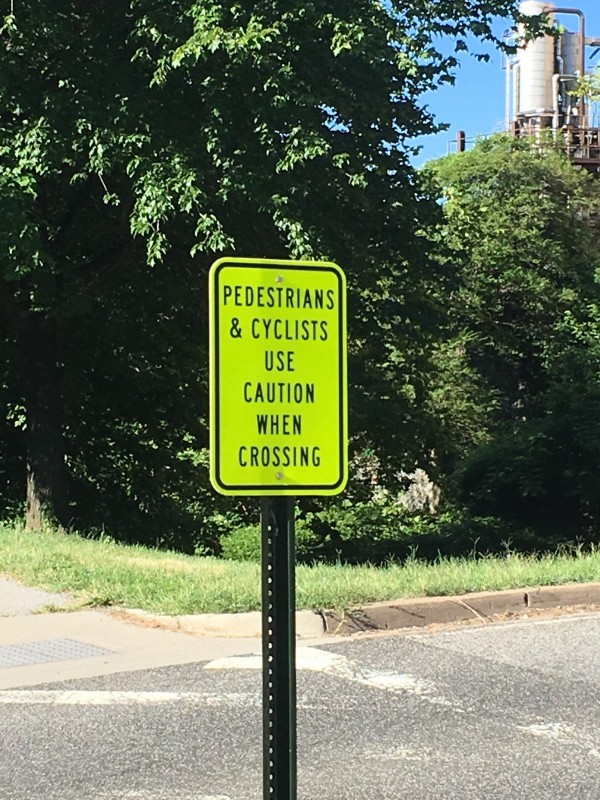One good question led to an important safety improvement in Rock Creek Park

Image by Kevin Teague licensed under Creative Commons.
When people speak out about issues in their communities, sometimes the powers that be actually listen. In September 2017, the Washington Area Bicycle Association noticed that most of the crosswalk signs along Rock Creek Park Trail telling pedestrians and cyclists to stop had been swapped with signs that encourage trail users to cross with caution.
The previous signs were confusing and at odds with District law, making them potentially dangerous as well. The change was great, but what’s more interesting was what led the National Park Service to make the change, and why they were a problem in the first place.
Previous signs may have conflicted with District law
I recently asked NPS what had prompted the new signs last year. Public Affairs Specialist Jonathan Shafer told me NPS changed the signs “after conversations with a community partner group in 2017.” (The representative didn’t share which community group.) That group had inquired whether pedestrians or drivers had the right of way at these marked crosswalks, and NPS' investigation eventually revealed the answer.
Previously, each marked crossing had two signs: on top a standard stop sign and below that a yellow sign stating “Trail Users Yield to Traffic” in all caps. This combination at every Rock Creek Trail crosswalk implied that drivers on the roadway had the right of way and trail users had to yield.
Previous signs. Image created with Google Maps. 
These signs seemed to be inconsistent with District law, which reads: “The driver of a vehicle shall stop and remain stopped to allow a pedestrian to cross the roadway within any marked crosswalk…”
The law also states that cyclists and people riding personal mobility vehicles “shall have the rights and duties applicable to a pedestrian” at crosswalks, through cyclists must also yield to pedestrians in the crosswalk.
Drivers, pedestrians, and cyclists used to District law at crosswalks had to reconcile these signs with what they believed to be the law. That matters, because confusion can lead to unnecessary safety risks.
Replacement signs aligned with District law
The question prompted NPS to consult with the Federal Highway Administration (FHA) to review the signs and consider what might be more appropriate instead. They found that the existing signs indeed weren't consistent with DC law.
NPS and the FHA then consulted the Manual of Uniform Traffic Control Design (MUTCD), which regulates the standards for all traffic control devices in the US, to identify better signage. At each crosswalk, NPS completely removed the stop sign and replaced the yellow sign with much different text: “Pedestrians and Cyclists Use Caution When Crossing,” also in all caps.
Replacement signs.Image created with Google Maps. 
Closeup of replacement signs at Pennsylvania Avenue NW entrance to Rock Creek Parkway Image by the author.
Shafer added that NPS kept stop signs in one situation. That's because the MUTCD requires a stop sign on shared-use paths at points where bicyclists are required to stop, specifically when a crosswalk goes across the trail.
A good question led to a great result
Of course, signage can only do so much. As this recent video of a child almost being struck by a driver on Piney Branch Road in Silver Spring illustrates, we often need physical infrastructure improvements to protect people walking and bicycling from cars.
Nonetheless, the change better aligns with how other crosswalks work in the District, and the consistent expectations for people walking, bicycling, and driving help eliminate confusion. All users now have the same obligations and rights at Rock Creek trail crosswalks, just like any any other crosswalk in the District.
The previous signs could have stayed forever had that unidentified community group not asked NPS to review them. This goes to show that questioning the status quo can lead to safety improvements for all users!
